As the sun rises over the Mekong Delta, casting a warm glow on the endless green rice paddies, the day begins with a simple rhythm—people greeting each other with smiles, families gathering for breakfast, and communities preparing for their daily tasks. This is Vietnam that has been shaped by centuries of tradition, where every moment is connected to the past.
Vietnamese culture is a living tapestry, woven from customs, rituals, and beliefs that have been passed down through generations. Whether it’s the excitement of Tet, the pride taken in food, or the quiet reverence for ancestors, every tradition reflects a piece of the Vietnamese story. Let’s explore 24 cherished traditions and customs that define the rich cultural life of Vietnam.
Vietnamese Ethnic Group Cultures in Vietnamese Culture
Vietnamese culture
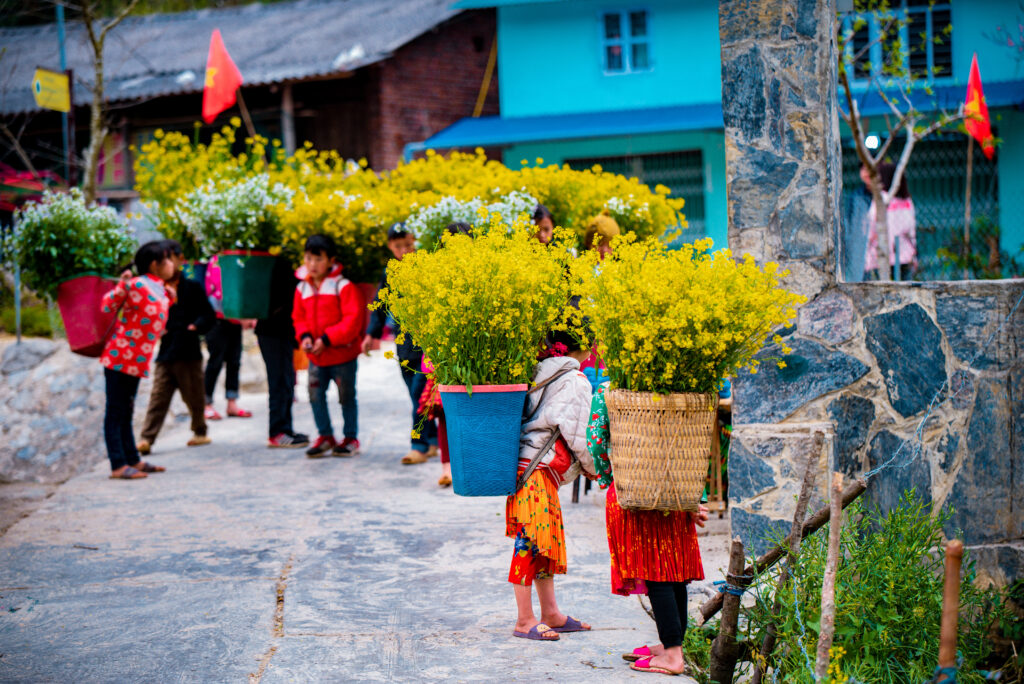
Vietnam is home to 54 ethnic groups, each contributing to the country’s rich cultural diversity. While the Kinh people make up the majority, other groups like the Hmong, Tay, Cham, and Ede offer unique traditions, languages, and customs that enhance Vietnam’s identity.
In the northern mountains, the Hmong wear vibrant, handmade traditional attire and maintain ancient customs passed down for generations. The Ede people, from the central highlands, live in stilt houses and uphold community-centered traditions tied to agriculture, music, and dance. Each group, from the Cham with their Islamic roots to the Tay with their weaving practices, adds to the rich cultural tapestry of Vietnam.
If you want to dive deeper into the diversity of Vietnamese people, click here to explore.
Ancestor Worship in Vietnamese Culture
Vietnamese culture
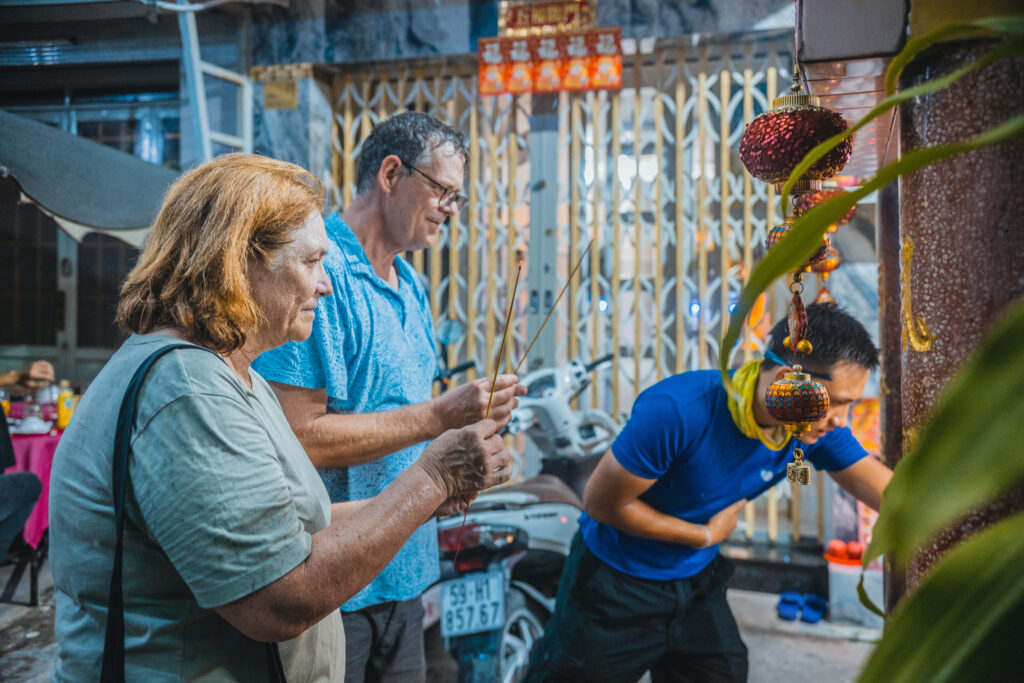
Ancestor worship plays a vital role in Vietnamese culture. It reflects a deep respect for one’s lineage, with the belief that ancestors continue to have an influence on the lives of their descendants. Almost every Vietnamese family has an ancestral altar in their home, where offerings of food, incense, and flowers are made.
This practice is especially important during Tet and death anniversaries, when families gather to honor their ancestors. These rituals are seen as acts of gratitude, maintaining a connection between past and present. Honoring one’s ancestors brings protection, blessings, and prosperity to the family.
Lunar New Year (Tet Nguyen Dan) in Vietnamese Culture
Vietnamese culture
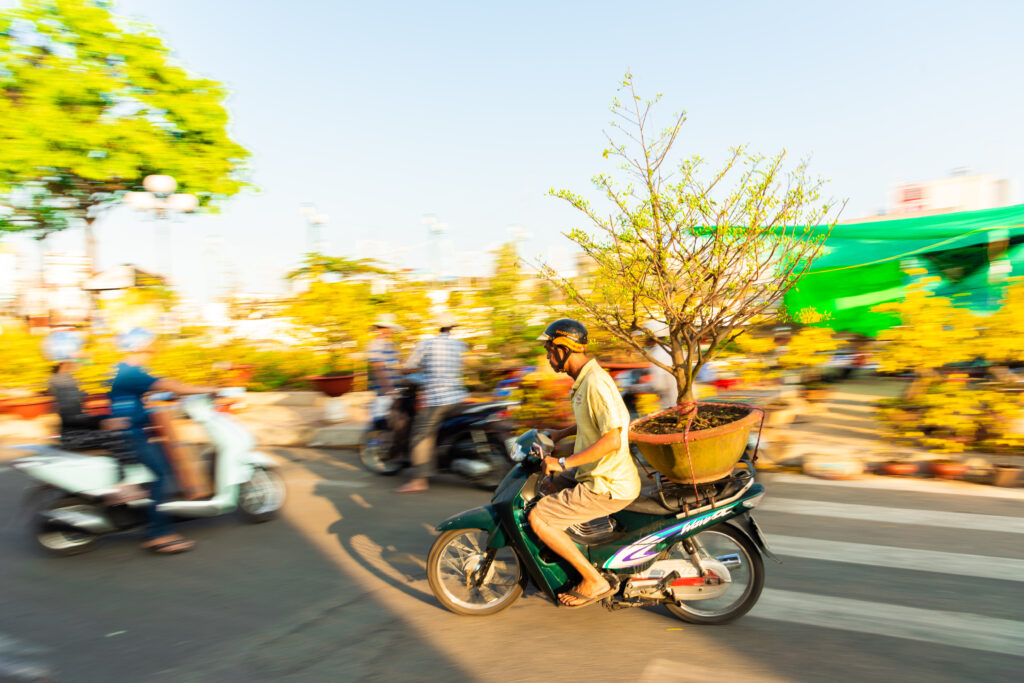
Tet, or the Lunar New Year, is the most significant celebration in Vietnam. It marks the beginning of the new year according to the lunar calendar and is a time for families to reunite and celebrate together. Homes are cleaned and decorated with red banners for good fortune, and the air is filled with the scent of incense and blossoming flowers like cherry blossom and apricot blossom.
The festival is celebrated with traditional dishes such as banh chung in the north and banh tet in the south. These sticky rice cakes, wrapped in banana leaves, symbolize the earth and the sky. Tet is more than just a celebration—it’s a time of reflection, renewal, and hope for the future, when families come together to welcome the new year with joy and optimism.
Vietnamese Cuisine and Culinary Traditions in Vietnamese Culture
Vietnamese culture
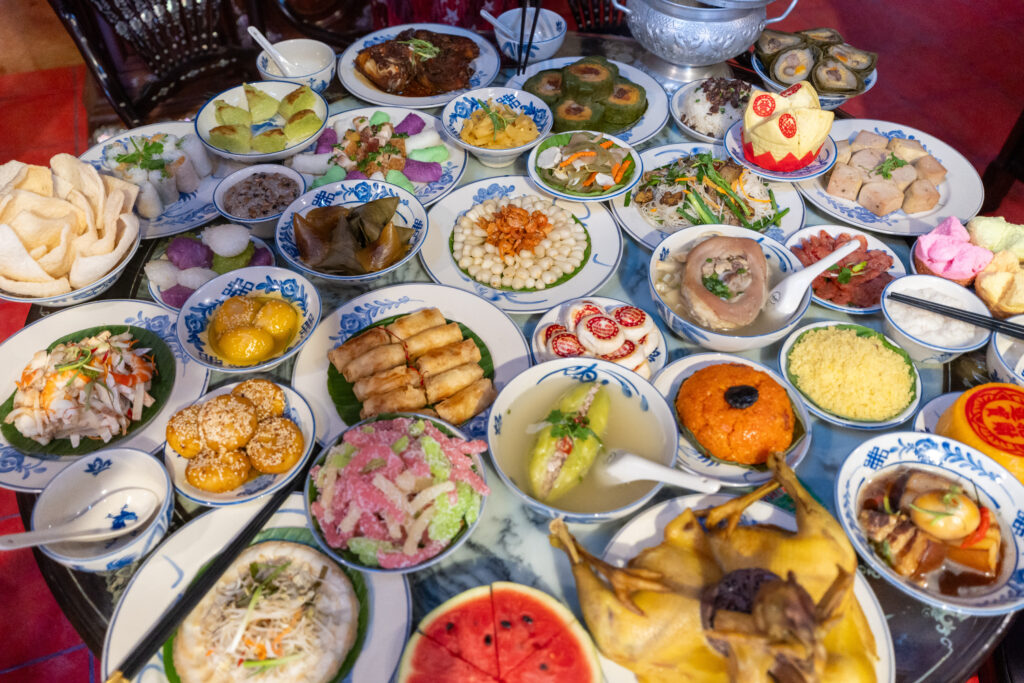
Vietnamese cuisine is known for its balance of flavors, fresh ingredients, and regional diversity. Each region has its own distinct culinary identity, shaped by geography and tradition. In the south, dishes are often sweeter and spicier, reflecting the tropical abundance of the region. Dishes like hu tieu (a savory noodle soup) and ca kho to (caramelized fish in a clay pot) are staples of southern cuisine.
Meals in Vietnam are typically communal, with dishes placed in the center of the table for everyone to share. This tradition emphasizes the importance of connection and family. Dining is not just about eating; it’s about sharing, conversation, and the bonds that are strengthened around the table.
Traditional Arts and Crafts in Vietnamese Culture
Vietnamese culture
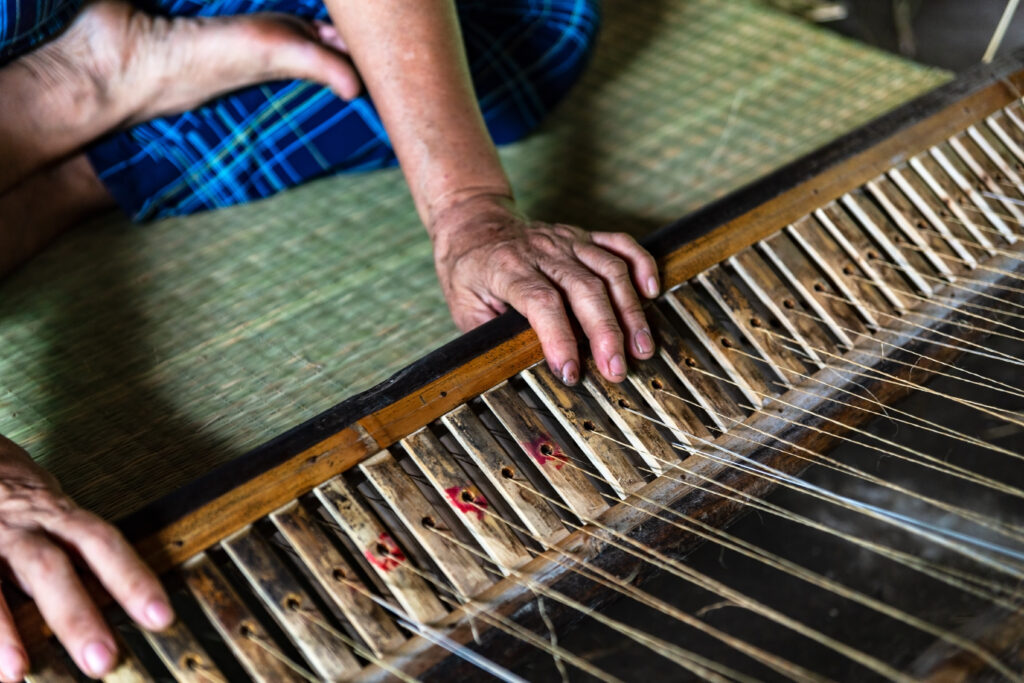
Vietnam’s traditional arts and crafts are a reflection of its rich cultural heritage. From lacquerware to silk weaving, these crafts have been practiced for centuries, passed down from generation to generation. In the Mekong Delta, artisans continue to weave intricate baskets and mats, preserving skills that have been perfected over time.
Crafts in Vietnam are not just about creating beautiful objects—they are expressions of cultural identity. Whether it’s hand-carved wooden figures or intricately woven textiles, each piece tells a story of patience, craftsmanship, and a deep connection to the past.
Traditional Clothing in Vietnamese Culture
Vietnamese culture
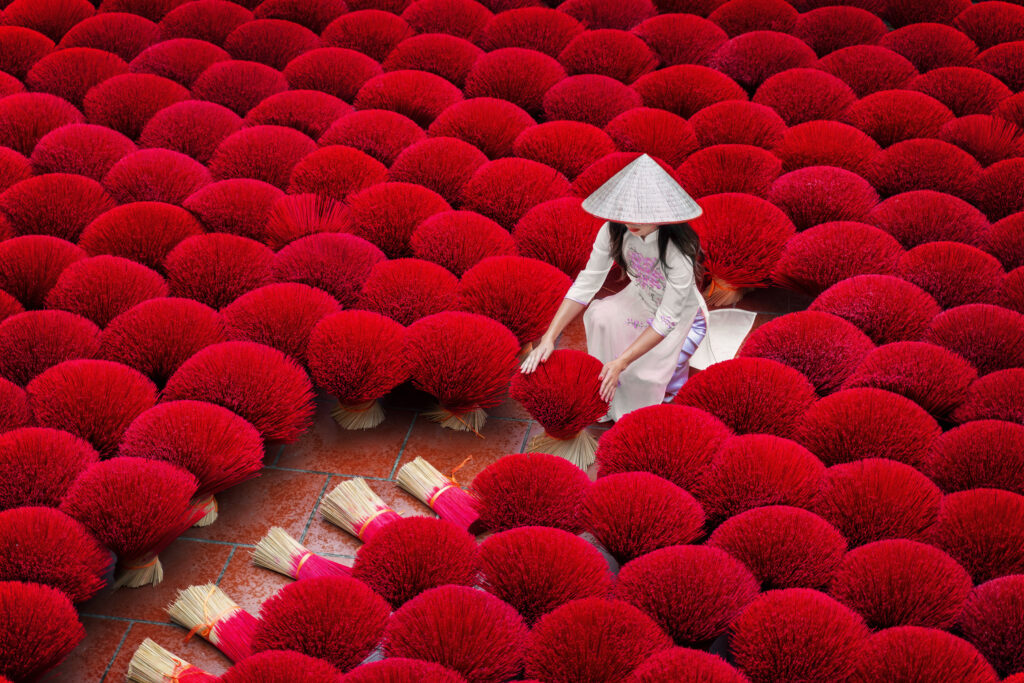
The ao dai is Vietnam’s most iconic traditional attire, known for its elegance and grace. Worn during special occasions such as weddings, festivals, and national ceremonies, the ao dai symbolizes the beauty and pride of Vietnamese women.
In addition to the ao dai, the ao ba ba is a popular traditional outfit in the south of Vietnam, particularly in rural areas. This simple, lightweight garment is often worn by farmers and people in the Mekong Delta for its practicality and comfort. Both the ao dai and ao ba ba are reflections of the cultural identity and the lifestyle of Vietnamese people.

Literature and Folklore in Vietnamese Culture
Vietnamese culture

Vietnamese literature and folklore are filled with stories of legendary heroes, mythical creatures, and moral lessons. One of the most famous works is The Tale of Kieu, written by Nguyen Du, which tells the story of a woman’s sacrifice for her family. This literary masterpiece speaks to the values of loyalty, love, and resilience, deeply ingrained in Vietnamese culture.
Folklore is also rich with tales of dragons, fairies, and brave warriors. These stories are passed down orally, connecting generations through shared narratives and reflecting the values and beliefs of Vietnamese society.
Vietnamese Language in Vietnamese Culture
Vietnamese culture
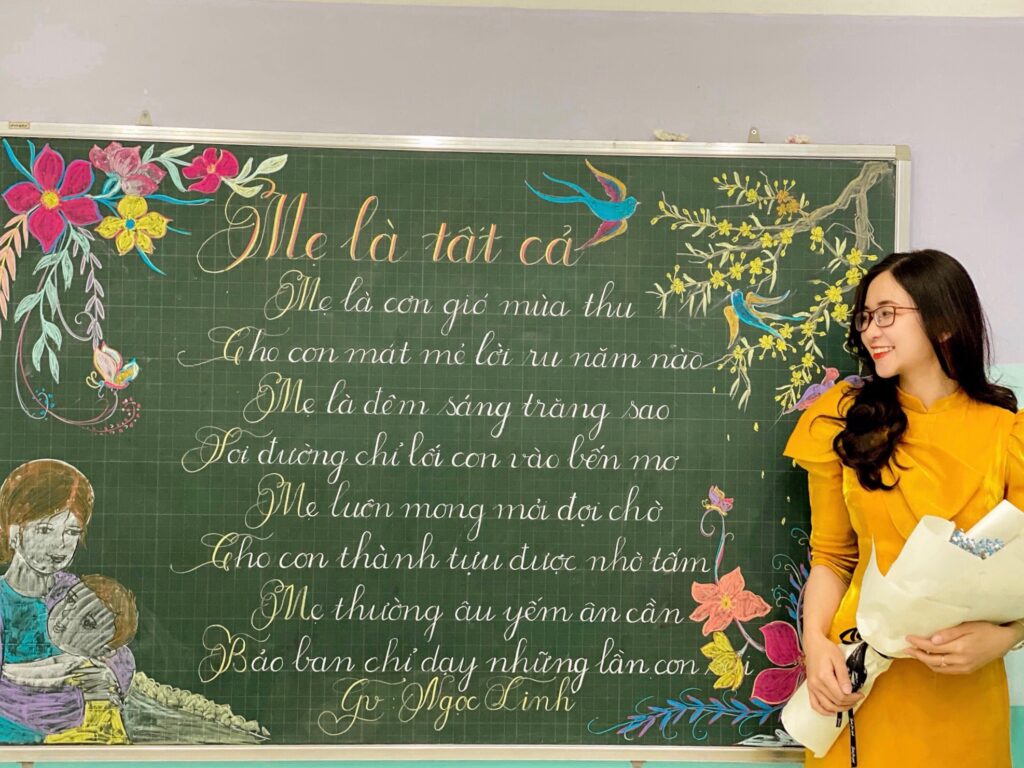
The Vietnamese language is unique, not just because of its tonal nature, but because of the cultural richness it carries. With influences from Chinese, French, and even English, Vietnamese has evolved into a language that is both expressive and nuanced.
Regional dialects vary, with the southern dialect having a distinct rhythm and tone compared to the north. This linguistic diversity reflects the country’s rich cultural history and adds another layer to the complexity of Vietnamese identity.
Architecture and Heritage Sites in Vietnamese Culture
Vietnamese culture
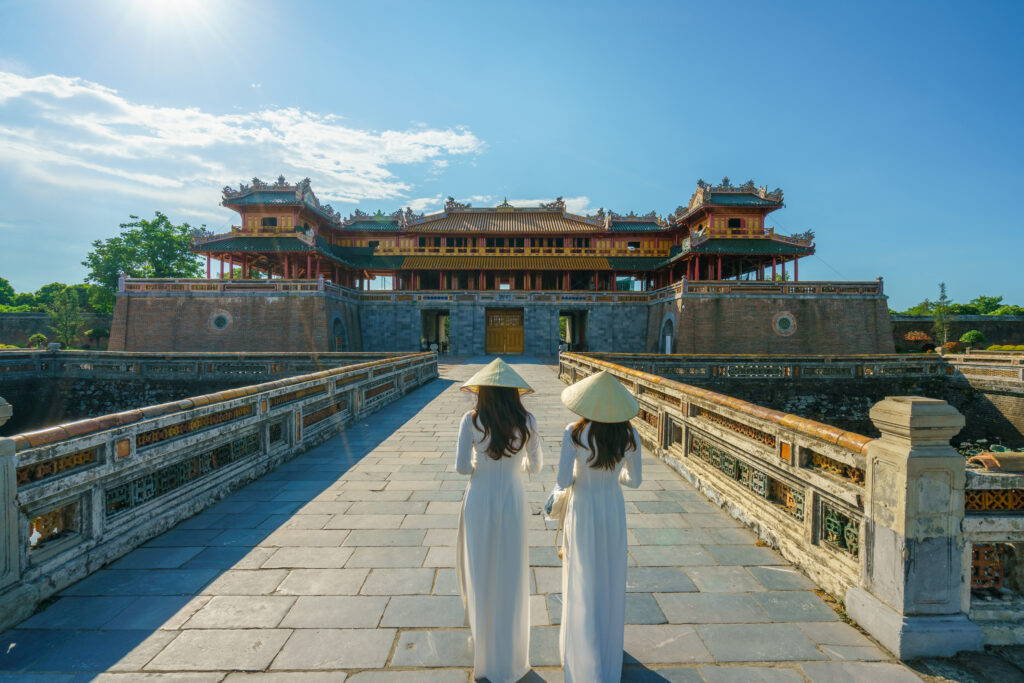
Vietnam’s architecture is a blend of ancient tradition and modern influence. From the ancient pagodas to the French colonial buildings, every structure tells a part of the nation’s history. In the south, the Cao Dai Temple in Tay Ninh stands as a unique example of religious architecture, combining Eastern and Western elements in its design.
Heritage sites like Hue’s Imperial City and My Son’s ancient temples allow visitors to step back in time, appreciating the intricate craftsmanship and deep spiritual connection that define Vietnamese architecture. These structures are not just monuments—they are living testaments to the resilience and creativity of the Vietnamese people.
Modern Vietnamese Culture in Vietnamese Culture
Vietnamese culture
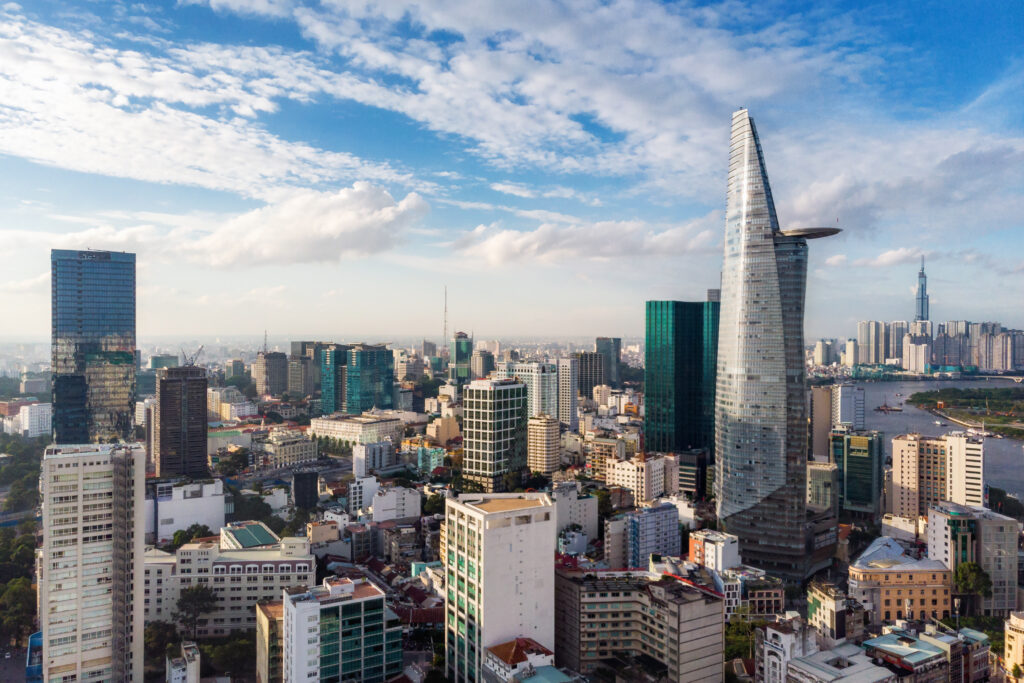
Today, Vietnam is a vibrant mix of old and new. As the country modernizes, it continues to hold onto its traditions. In cities like Ho Chi Minh, you’ll see young people in trendy cafes alongside street vendors selling traditional dishes like pho and banh mi.
Vietnamese people have embraced modern influences while staying rooted in the values of family, respect, and community. This blend of tradition and modernity makes Vietnam an exciting place to explore, offering a dynamic cultural landscape where the past and present coexist in harmony.
Vietnamese Sport Culture in Vietnamese Culture
Vietnamese culture
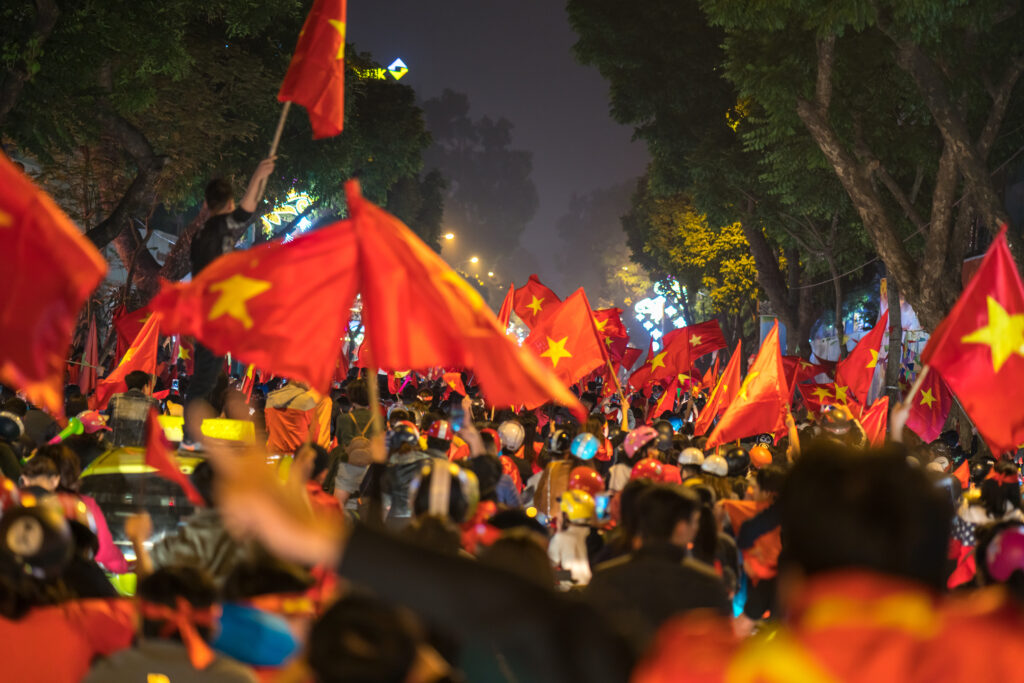
Football is the most beloved sport in Vietnam, and nowhere is this passion more evident than in the streets of Ho Chi Minh City. On match days, the city comes alive with fans dressed in red, waving flags, and cheering for the national team. Football is more than just a game here—it’s a unifying force that brings together people from all walks of life, creating a shared sense of pride and excitement.
But beyond football, Ho Chi Minh City offers a vibrant sporting culture with a wide variety of activities. Sports like volleyball, badminton, and martial arts are also incredibly popular, promoting both health and community engagement. Whether you’re looking for a friendly game in the park or a competitive match, the city’s sports scene reflects the communal spirit that is so central to Vietnamese life.
For those interested in exploring the best places to play sports in Ho Chi Minh City, click here.
Communal Dining in Vietnamese Culture
Vietnamese culture
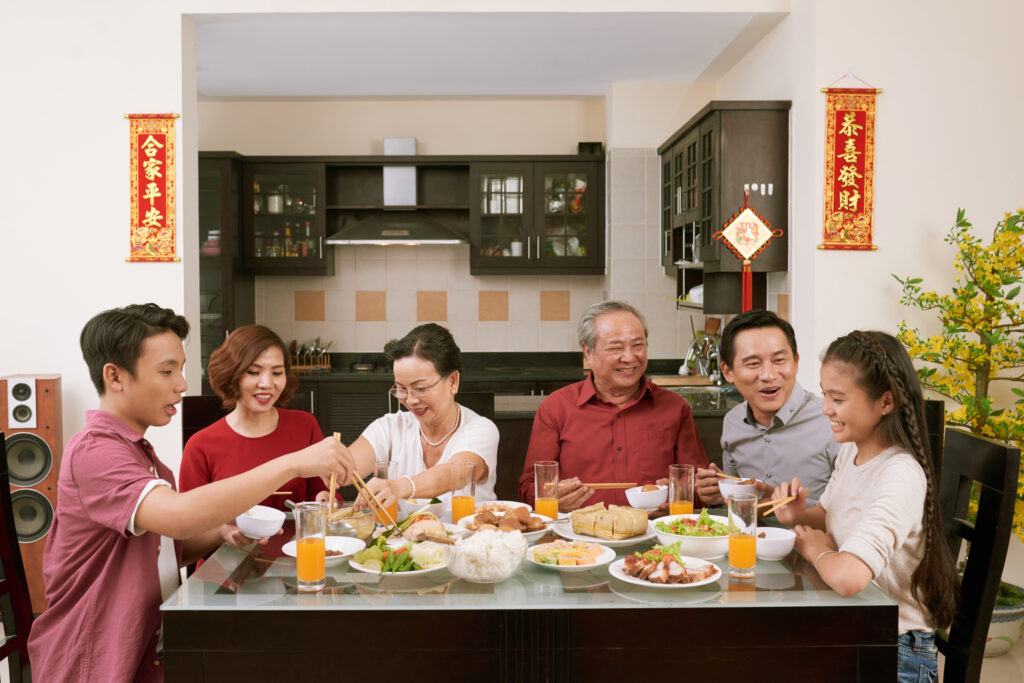
In Vietnam, food is meant to be shared. Communal dining is a tradition that reflects the importance of family and community. Dishes are placed at the center of the table, and everyone helps themselves, fostering a sense of togetherness and unity.
In southern Vietnam, meals often include flavorful dishes like ca kho to (braised fish) and fresh greens, accompanied by bowls of steaming rice. Eating together is not just about nourishment—it’s about building relationships and creating lasting memories.
Drinking Culture: Beer and Rice Wine in Vietnamese Culture
Vietnamese culture
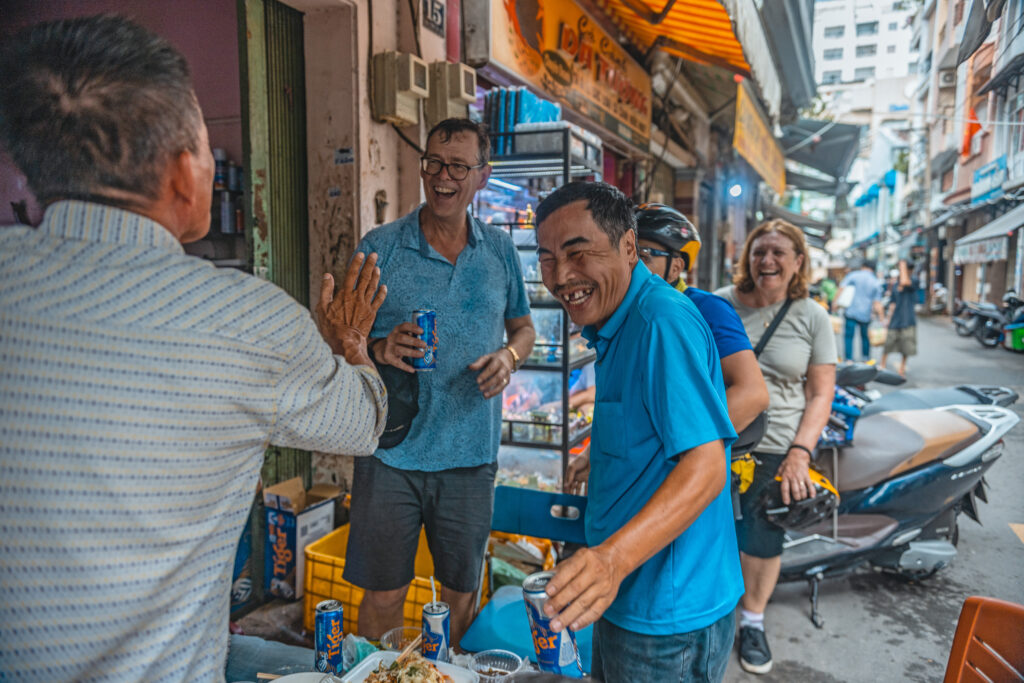
In Vietnam, drinking is a social activity, often enjoyed during family gatherings or celebrations. Bia hoi, or fresh beer, is a popular choice in casual settings, while ruou (rice wine) is commonly shared during special occasions. Drinking is seen as a way to strengthen bonds, with toasts made to health, happiness, and prosperity.
In the south, rice wine is often consumed in family celebrations, and it’s always accompanied by laughter, conversation, and sometimes even a bit of karaoke!
Community Spirit in Vietnamese Culture
Vietnamese culture
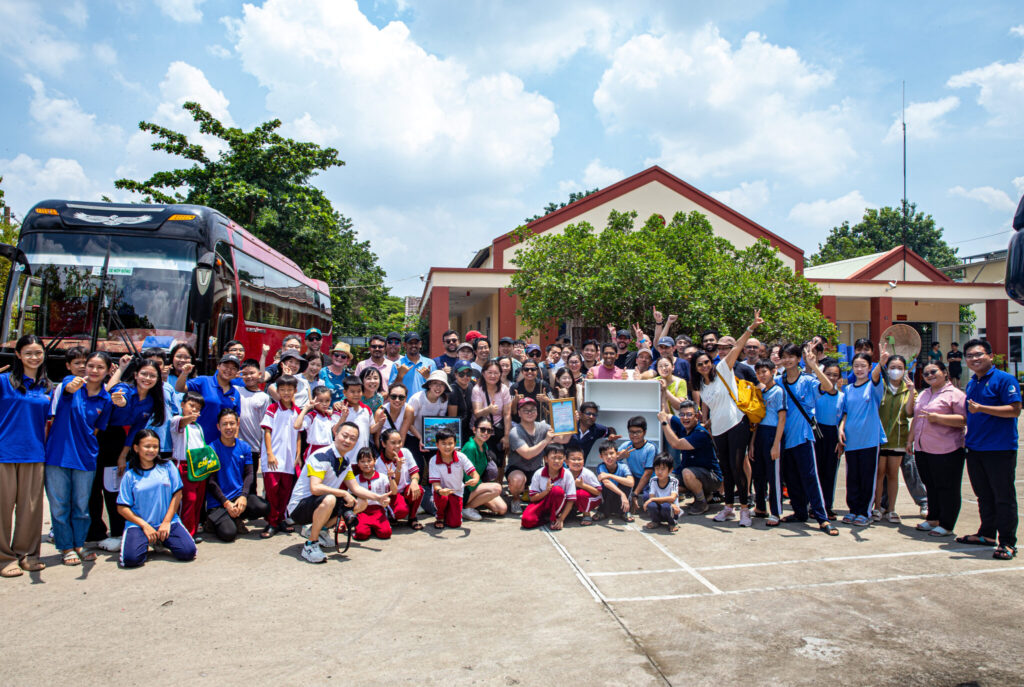
Vietnamese people have a deeply ingrained sense of community, which plays a vital role in daily life across the country. This spirit of mutual support and kindness can be seen in small gestures, like helping neighbors with daily tasks, as well as in larger communal activities that bring entire villages and neighborhoods together.
Whether it’s assisting with the harvest, contributing to local festivals, or simply watching over each other’s homes and children, this community-oriented mindset ensures that no one is ever truly alone. In Vietnam, there’s a saying: “Bán anh em xa, mua láng giềng gần” which means, “Better a close neighbor than a distant relative.” This captures how highly Vietnamese people value their neighbors and the strong bonds that form between them. This communal spirit is what binds people together through both celebrations and challenges, making it one of the most cherished aspects of Vietnamese culture.
Traditional Festivals in Vietnamese Culture
Vietnamese culture
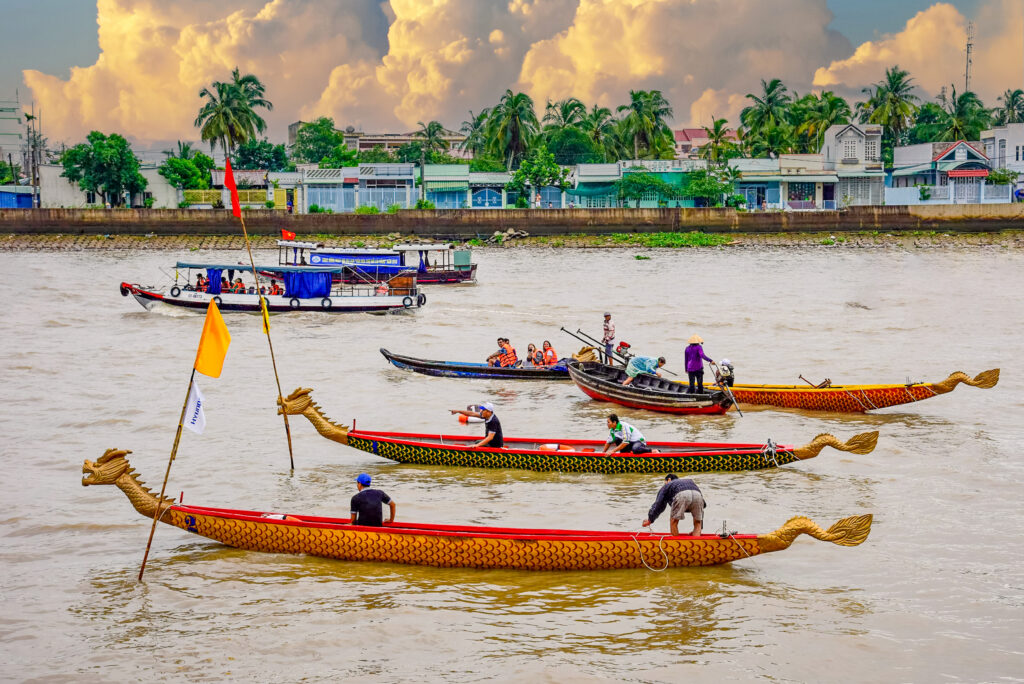
From Tet Nguyen Dan, the Lunar New Year, to Reunification Day, these celebrations are more than just public holidays—they bring the entire country to life with vibrant colors, traditional music, and a joyous atmosphere. Streets are filled with festive decorations, from red banners symbolizing luck and prosperity to lanterns illuminating the night sky. In every city and village, these events draw families, friends, and communities together to honor their shared history and embrace the future with optimism.
In the south, the Mid-Autumn Festival is particularly lively and magical. Known as a time to celebrate the harvest and the full moon, this festival transforms streets into a scene of shimmering light as children parade with brightly colored lanterns shaped like stars, animals, or traditional symbols. It’s a time for reflection and gratitude, where people express thanks for the abundance in their lives and offer blessings for the future.
These festivals are more than just moments of celebration—they serve as vital opportunities for communities to come together, reinforce their bonds, and keep cultural traditions alive. Through these shared experiences, Vietnamese people strengthen their connection to their ancestors and to each other, ensuring that the rich tapestry of their heritage continues to thrive across generations.
Water Puppetry in Vietnamese Culture
Vietnamese culture
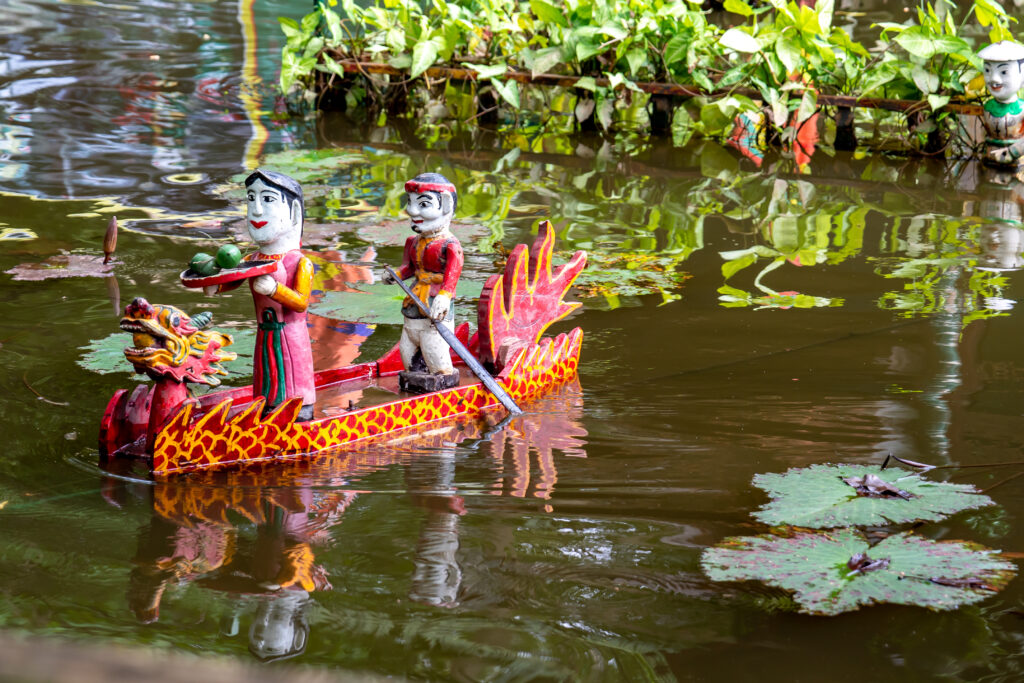
Water puppetry (Múa rối nước) is one of Vietnam’s oldest and most unique art forms, originating in the Red River Delta nearly a thousand years ago. The puppets are controlled by long bamboo rods, submerged in water, creating the illusion that they are floating across the stage. Water puppetry tells stories of rural life, Vietnamese folklore, and historical legends, often accompanied by traditional music and singing.
Watching a water puppetry performance is like being transported into the heart of ancient Vietnam, with tales of the rice harvest, heroic battles, and mythical creatures like dragons and phoenixes brought to life in a vibrant, visual spectacle.
Traditional Vietnamese Music and Instruments in Vietnamese Culture
Vietnamese culture

Vietnam’s traditional music, deeply embedded in its history and culture, varies across regions. Genres like Ca tru, Quan ho, and Don ca tai tu are centuries old, performed at festivals and important ceremonies. Vietnamese music is known for its use of unique instruments such as the dan bau (monochord), dan tranh (zither), and dan nguyet (moon lute).
Each of these instruments has a distinctive sound that reflects the country’s rich musical heritage. For instance, the dan bau, with its single string and harmonic overtones, can produce hauntingly beautiful melodies that evoke a deep emotional connection with Vietnamese traditions.
Coffee Culture in Vietnamese Culture
Vietnamese culture
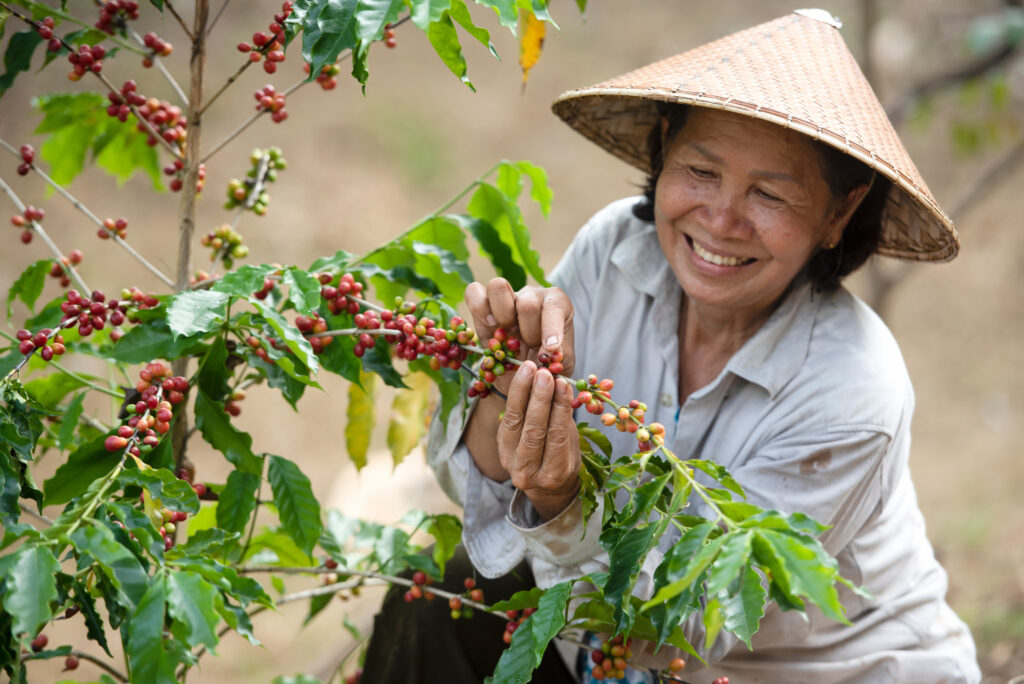
Vietnam is the world’s second-largest coffee producer, and Vietnamese coffee culture is a distinct and cherished part of daily life. Coffee shops, ranging from street-side vendors to elegant cafes, are found everywhere. A common sight is people sitting on low plastic stools, sipping ca phe sua da (iced coffee with condensed milk) or enjoying ca phe trung (egg coffee), a Hanoi specialty.
Coffee in Vietnam is also deeply tied to the country’s agricultural heritage, with the rich soils of the Central Highlands producing high-quality Robusta beans, known for their bold flavor and smooth texture. This homegrown coffee has shaped the unique taste profiles that distinguish Vietnamese coffee from other global blends, making it a source of national pride.
The experience of drinking coffee in Vietnam is not just about the taste—it’s about savoring the moment, whether that’s with a friend, a book, or simply by watching the world pass by from a café window.
For discovering 4 unique coffee blends in Ho Chi Minh City, click here.
Religious Practices and Temples in Vietnamese Culture
Vietnamese culture
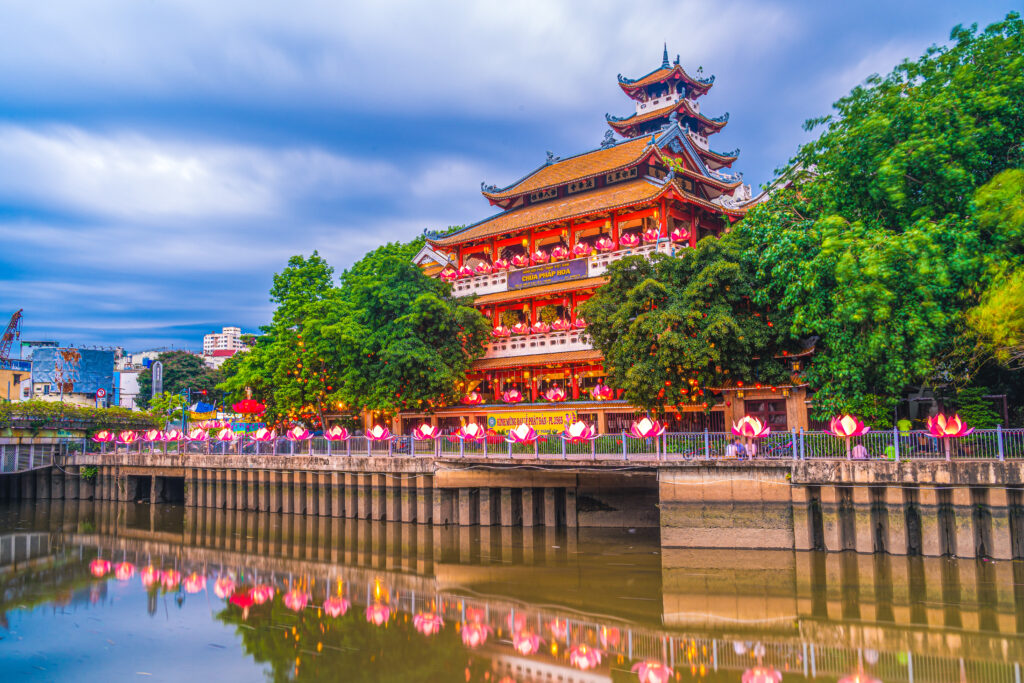
Vietnam is a deeply spiritual country, where religious practices and beliefs form an integral part of daily life. With a rich blend of Buddhism, Confucianism, Taoism, and Catholicism, Vietnam’s spiritual landscape is diverse and deeply rooted in tradition. Temples and pagodas are not just places of worship—they are central to the cultural and spiritual identity of the Vietnamese people.
Two of the most iconic religious sites in Ho Chi Minh City are the Ba Thien Hau Pagoda and the Jade Emperor Pagoda. Beyond these two famous sites, Ho Chi Minh City is home to many other significant religious landmarks. From the hidden corners of ancient temples to the grand architectural marvels of pagodas, each one offers a unique insight into Vietnam’s spiritual richness. For more details on the must-visit temples in District 1 of Ho Chi Minh City, click here.
Whether during festivals, such as Lunar New Year or Vu Lan, or during significant life events like weddings, funerals, and birthdays, Vietnamese people frequently visit these sacred spaces. They reflect in quiet meditation, make offerings of fruits, flowers, and incense, and seek guidance from the divine. These religious sites are not just places of worship but are spaces of spiritual renewal and community gathering, deeply embedded in the rhythm of Vietnamese life.
Superstitions in Vietnamese Culture
Vietnamese culture
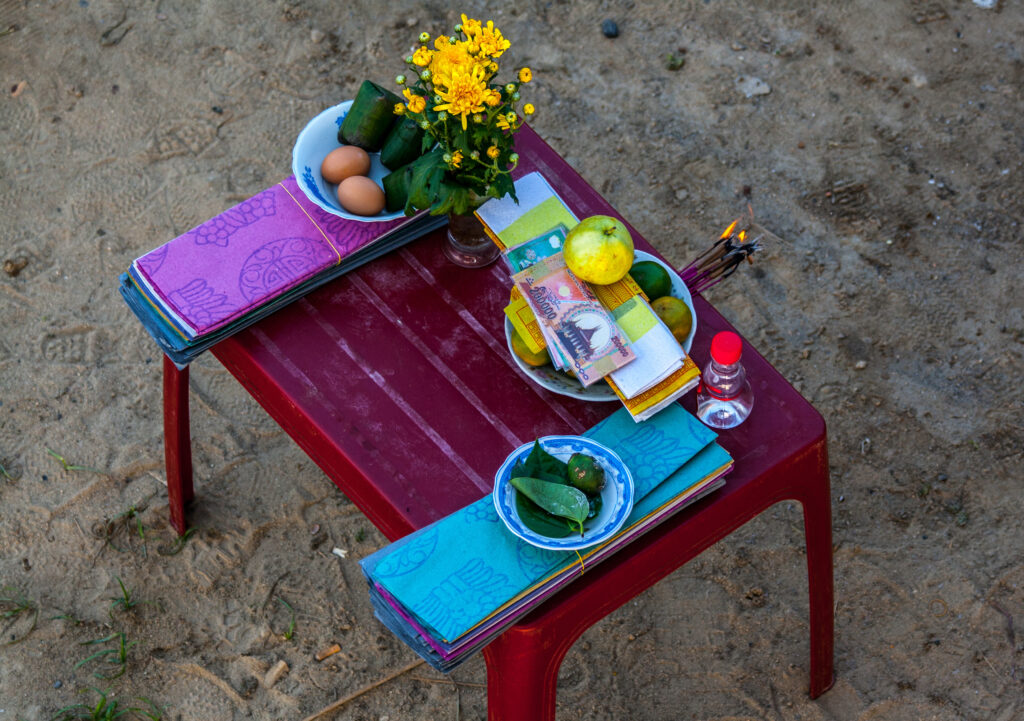
Superstitions are woven into many aspects of daily life in Vietnam. From beliefs about lucky and unlucky days to practices that ensure good fortune, these superstitions reflect a deep cultural connection to fate and spirituality. For example, during Tet, sweeping the floor is avoided as it is believed to sweep away good luck. The number 4 is often avoided as it sounds similar to the word for “death” in Vietnamese.
These beliefs are taken seriously, especially during important events like weddings, the Lunar New Year, and business openings, reflecting the cultural importance of luck and harmony in Vietnamese society.
Vietnamese Weddings in Vietnamese Culture
Vietnamese culture

Vietnamese weddings are vibrant and deeply symbolic, blending both modern and traditional elements. The celebration typically begins with the betrothal ceremony (Lễ dạm ngõ), where the groom’s family formally visits the bride’s family, bringing gifts and seeking approval for the marriage. This is followed by the groom’s procession (Lễ rước dâu), a lively event where the groom’s family and friends visit the bride’s home, presenting offerings such as tea, wine, and fruit to show respect and goodwill. A key moment is when the couple offers tea to their ancestors, seeking blessings for their marriage.
Vietnamese weddings are joyful occasions, with rituals celebrating the union of two families. The bride often wears a red ao dai, symbolizing happiness and prosperity, and the ceremony concludes with a lavish banquet where family and friends gather to celebrate the couple’s new beginning.
For a detailed look at a traditional Vietnamese wedding in the Mekong Delta, specifically in Cai Lay Town, click here.
Martial Arts in Vietnam in Vietnamese Culture
Vietnamese culture

Vietnam has a strong martial arts tradition, with Vovinam and Binh Dinh martial arts being the most widely practiced forms. Vovinam, founded in the early 20th century, emphasizes both self-defense and mental discipline, incorporating techniques such as grappling, throwing, and striking.
These martial arts are more than just physical practice—they are seen as a way to cultivate inner strength, resilience, and harmony, values deeply embedded in Vietnamese culture.
Street Food Culture in Vietnamese Culture
Vietnamese culture
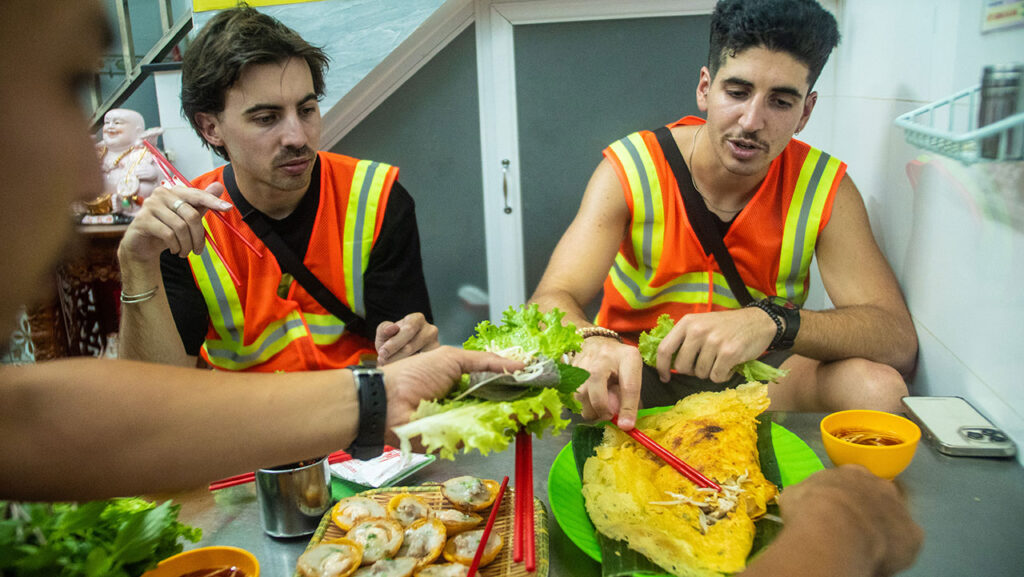
Vietnam’s bustling street food scene is a vibrant reflection of the country’s deep-rooted love for fresh, flavorful, and affordable meals. From the early hours of the morning to late at night, the streets are lined with vendors serving an incredible array of dishes, each one a testament to the rich culinary traditions that have been passed down through generations. Whether you’re in the heart of a busy city or wandering through a quiet rural town, street food is an essential part of daily life, offering not just sustenance but a window into the soul of Vietnamese culture.
Some of the most iconic dishes found at street stalls include the world-famous pho, a fragrant noodle soup; bun rieu, a tangy tomato and crab noodle dish; banh mi, a crispy baguette stuffed with an array of fillings; and banh xeo, a savory, crispy pancake filled with shrimp, pork, and bean sprouts. Each region has its own specialties, shaped by the local climate, geography, and history. In the north, dishes tend to have a more delicate and subtle flavor, while the food in the south is known for its bold, sweet, and spicy notes.
For those eager to dive deeper into the street food scene in Saigon, you’ll find an abundance of flavors to explore. From hidden alleys offering freshly grilled seafood to bustling markets serving hot bowls of noodles, Saigon is a paradise for food lovers. To learn more about street food in Saigon, click here, or for an even more immersive experience, you can try the Saigon Foodie Night Ride with Jackfruit Adventure. This tour offers a unique opportunity to taste the best of Saigon’s street food while exploring the city on two wheels, taking you off the beaten path to discover culinary treasures you might otherwise miss.
Traditional Vietnamese Games in Vietnamese Culture
Vietnamese culture

Traditional games are an important part of Vietnamese festivals and communal gatherings. Games like bamboo jacks (chơi chuyền), human chess (cờ người), and đánh đu (the swinging game) are enjoyed by both children and adults, particularly during the Tet holiday. These games promote a sense of fun and togetherness, as well as preserving cultural traditions that have been passed down through generations.
At festivals, especially in rural areas, these games bring communities together, fostering a spirit of playfulness and reinforcing the bonds that hold Vietnamese society together.
Let’s Wrap It Up
Vietnam is not just a place; it’s an experience. Through its people, traditions, and everyday practices, Vietnam tells a story of resilience, community, and pride. These traditions aren’t relics of the past—they are the heart of who we are today.
So come, explore, and discover the beauty of Vietnam, not just through its landscapes, but through its people, who will welcome you with open arms and share with you the stories that make this country so special.
Ho Chi Minh City Cycling Tour In Ho Chi Minh City (Saigon) – Vietnam
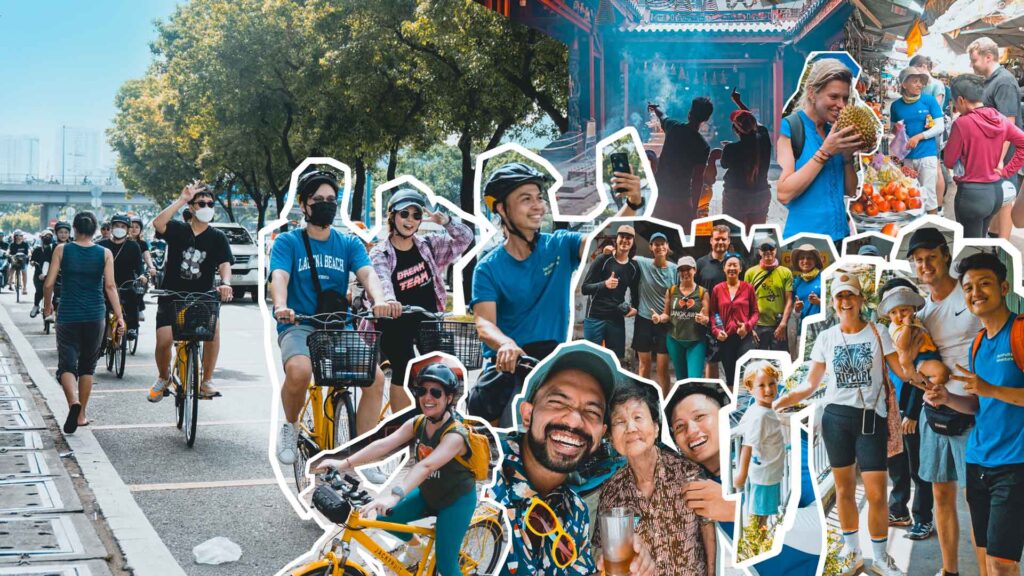
At Jackfruit Adventure, we organize Ho Chi Minh City Cycling Tour and Team Building Ho Chi Minh. With a deep knowledge of Saigon city and local connections, we believe we can give you an awesome bonding time together. Contact us today if you have any requests or questions to prepare a trip for your team to bond in Ho Chi Minh – Vietnam.




